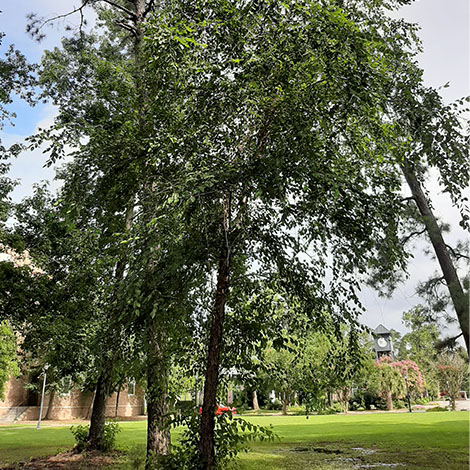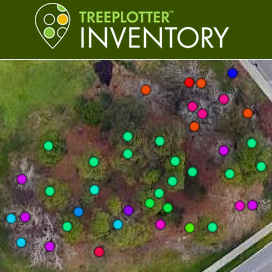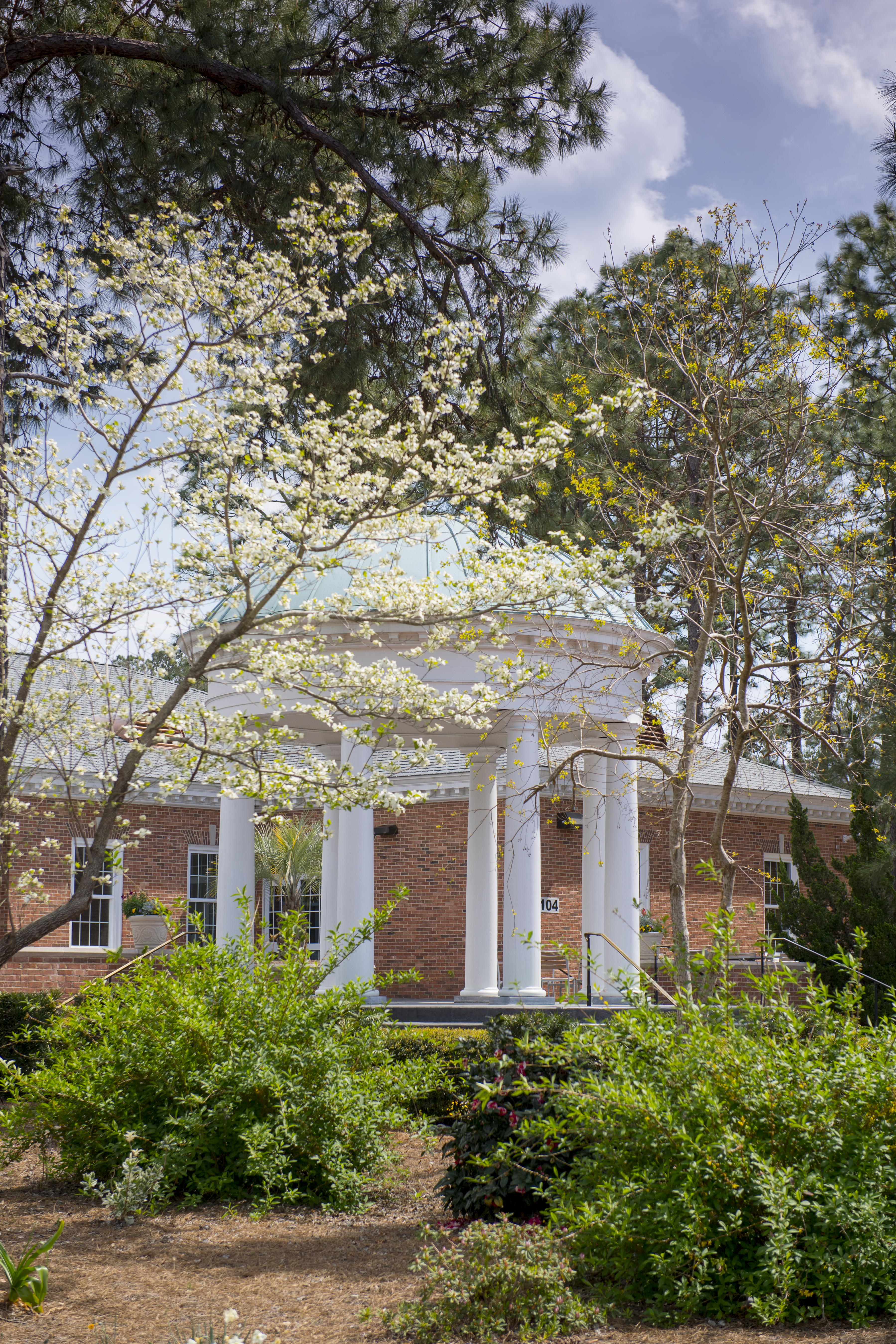CCU Arboretum
Water Tupelo
 Common Name: Water Tupelo
Common Name: Water Tupelo
Scientific Name: Nyssa aquatica
Species Range: Water tupelo is native to the southeastern United States ranging from Virginia to Texas and up to Illinois. It can be found in river swamps mixed with wetland hardwoods or in pure stands.
Growth Characteristics: The water tupelo often reaches heights over 100 feet and has a large swollen buttress. Its leaves grow 5 to 7 inches long in an oblong to ovate shape. The dark green leaves can sometimes have one or more irregularly spaced teeth. The grayish-brown bark is furrowed in narrow ridges. The green flowers that grow in clusters at the end of a stalk, appear in April through May. The dark blue to purple drupe fruit can mature to about 1 inch long during the summer.
Ecosystem Service Value: The water tupelo serves as a food source for many animals such as deer, squirrels, raccoons, ducks, and other birds. It is also a source for bees.
Uses, Other Details: The water tupelo is used a lot as a timber tree for plywood and hardwood pulp. The somewhat spongy buttress of the tree can be used as fishing floats and corks. Tupelo honey is highly sought-after honey.
Threats: The forest tent caterpillar is a threat to the water tupelo as well as fire as its thin bark is easily scorched.
Identification Tips and Tricks: Water tupelo can be hard to distinguish between other tupelos, but there are a few things to look at that can help identify a water tupelo. They don’t have a reddish mid-leaf, but their new leaves are very fragrant. The bark on these trees is not as defined without deep ridges and the branches droop down slightly, but if you were to compare it to the black tupelo, the water tupelo branches do not droop down nearly as much.
Species profile by Billie Rogers
References:
Kirkman, L. Katherine., et al. Native Trees of the Southeast: An Identification Guide. Timber Press, 2007.
“Plants Database: Water Tupelo, Nyssa aquatica.” USDA-Natural Resources Conservation Service. https://plants.usda.gov/core/profile?symbol=NYAQ2. Retrieved November 22, 2020.








